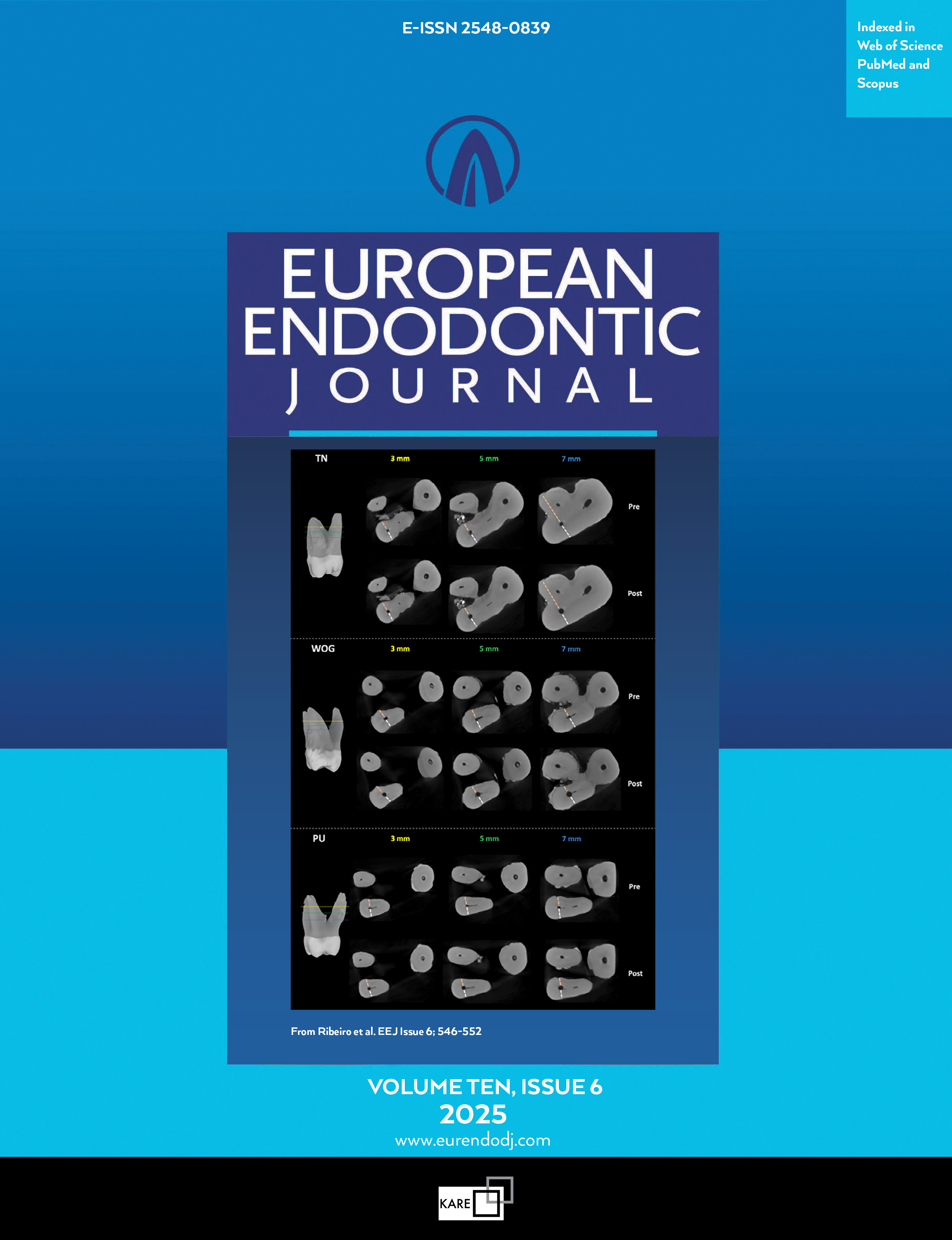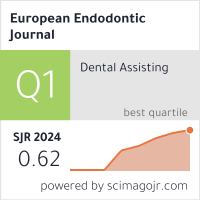Metrics
2024 IMPACT FACTOR
5 year Impact Factor
Eigenfactor Score
2024 CiteScore
Journal Citation Reports
(Clarivate 2025, JIF Rank)
Evaluation of Mesial Root Canals of Mandibular Molars Obturated with Gutta-Percha and Resilon Techniques
Bruno Cavalini Cavenago1, Aldo Enrique Del Carpio- Perochena2, Pablo Andrés Amoroso- Silva3, Murilo Priori Alcalde3, Samuel Lucas Fernandes4, Rodrigo Ricci Vivan3, Marco Antonio Hungaro Duarte31Department of Restorative Dentistry, Federal University of Paraná, Curitiba, Brazil2Division of Endodontics, University of Manitoba, Q-Winnipeg, Canada
3Department of Operative Dentistry, Endodontics and Dental Materials, Bauru School of Dentistry, University of São Paulo, Bauru, Brazil
4Department of Endodontics, Mineirense School, Mineiros, Brazil
Objective: The aim of this study was to evaluate the obturation of mesial root canals of mandibular first mo- lars performed with different filling techniques and materials (gutta-percha and resilon).
Methods: Seventy-eight mesial root canals of human mandibular first molars were prepared using the K3 rotary system, and the apical preparation was set up to size 35.04. The root canals were obturated with single cone, System B, Thermafil and Real Seal 1 techniques using either gutta-percha/ThermaSeal Plus (n=13) or Resilon/Real Seal SE (n=13). Rhodamine B dye was incorporated into the sealers. Each specimen was horizon- tally sectioned at 2 milimeters (mm), 4 mm and 6 mm from the apex, and the samples were examined under a stereomicroscope to evaluate the presence and type of isthmuses and the percentage areas of gutta-percha/ Resilon, sealer and voids. Confocal laser scanning microscopy (CLSM) was used to evaluate the sealer pene- tration into dentinal tubules. The Kruskal-Wallis and Dunns tests were used to analyse the stereomicroscope data, while the ANOVA and Tukey tests were used to analyse the CLSM data (P<0.05).
Results: Thermafil and Real Seal 1 fillings showed more gutta-percha/Resilon and less sealer (P<0.05) at the 2 mm level, but the percentage of voids was similar in all groups (P>0.05). At the 4 mm level, more sealer (P<0.05) was found in the single cone groups using both materials. The System B groups exhibited better performance at the 6 mm level. The percentage of sealer penetration showed no statistically significant dif- ferences among the obturation techniques for all evaluated levels. Similar results (P>0.05) were found for both material/sealers.
Conclusion: None of the materials or techniques completely filled the mesial root canals of mandibular mo- lars, but the plasticised techniques were more efficient. The obturations using both materials and sealers were similar.
Keywords: Endodontics, root canal filling materials, root canal obturation, obturation
Manuscript Language: English
(1461 downloaded)



